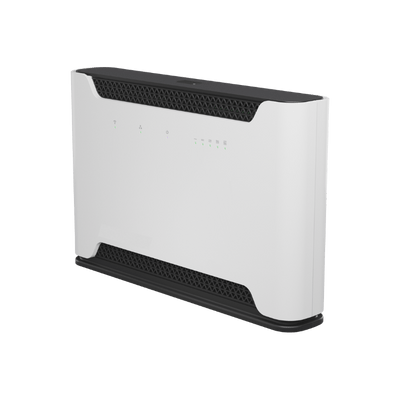Have you ever gone to buy a product online but then you read the product description and have no idea what it all means? Well, we can guarantee you aren't alone.
When buying something as complex as a 5G Mobile router, you're bound to come across terms that you haven't heard before and features which you don't understand the benefits of.
That's why we've created this handy guide to explain the most common terms that will appear in 4G & 5G Mobile router technical specifications. We want you to feel 100% confident that you're making the right connectivity call! Let's begin.
Gigabit Ethernet Ports
Gigabit ethernet ports are ports that enable you to connect your devices direct to the router to achieve very fast speeds. You can use standard ethernet cable (such as CAT5e or CAT6 cable) to connect multiple devices such as your computer or server to the LAN (Local Area Network) ethernet ports.
Having a router with Gigabit ethernet ports means you can send and receive a lot of data very quickly, with a theoretical maximum data rate of one gigabit per second (1,000 Mbps). Now, it's important to note that this is theoretical and won't be the actual speeds you'll see when plugging in devices such as your laptop to the port. The speed you will see will be dependent on what the 5G network capacity is in your area, so it will vary from business to business and home to home.
Different 5G routers will have different numbers of ethernet ports available; look out for where the data specification says 'four ethernet ports' or two gigabit ethernet ports'. This will give you an idea of the number of connected devices you'll be able to support via wired connection (not including WiFi).
And there is always the option to connect a network switch via an ethernet port to give you access to more ports, if the router doesn't provide enough for you.
Dual SIM
A dual sim 5G router is a 5G router that has two SIM slots, meaning dual sim failover is possible. This feature is particularly useful if you're looking for a reliable backup configuration to ensure your connection stays up and running in the event of any issues.
If one SIM runs out of data, then the router will seamlessly switch over to the alternative WAN connection using the SIM in the other sim card slot.
It's worth noting that in cases where you are using an unlimited data SIM card in a SIM slot, the dual SIM functionality is redundant. This is because it will never switch over to the second SIM as it will never hit a data limit.
Dual Band WiFi
Dual band Wi Fi is a type of WiFi that sends and receives signals on two different frequencies. This is helpful because it means that if one frequency is busy or has a lot of traffic, your device can still connect to the internet using the other frequency.
If the 5G router specification includes ethernet ports and WiFi, you know you can use both wired connections and wireless technology to get high speed connectivity.
Data Rates
The data rates of a router tell you how fast the router is capable of transferring data from one place to another, whether through a wired or wireless connection. This is measured by how much time it takes to transfer a certain amount of data from one spot (source) to another (destination).
Data rates is just another phrase for 'speeds'.
Antenna sockets
If a 5G router specification says the router has 'antenna sockets', then this means you can connect an external antenna to the router.
Small businesses and homes may need high gain external antenna connectors, if they are based in areas with weak network signal strength. You can find out what coverage is like in your area by checking the online network coverage checkers or using your smartphones to test how well you can pick up different carrier signal (e.g. Vodafone, EE, O2).
Download speeds
Many 5G router product listings will talk about download speeds the router is capable of.
Download speed is the rate at which data can be transferred from the internet to your device. This number is usually represented in megabits per second (Mbps) or gigabits per second (Gbps). A higher number means that you will be able to download files more quickly.
Download speeds affect things such as browsing and loading webpages and streaming video.
Upload speeds
As you might have guessed, upload speeds are the opposite to download speeds. They are supposed to be lower than download speeds.
Upload speeds are the rate at which data can be transferred from your device to the internet. Just like download speeds, this number is usually represented in megabits per second (Mbps) or gigabits per second (Gbps).
A high upload speed is great for things such as online gaming and high-quality video calls.
Industrial grade
This can also be referred to as 'business grade' hardware. If you see a router which is described using this term, it simply means the router is suitable for high-capacity business and office use. This doesn't mean it wouldn't be suitable as a home router, it just means the hardware is of a good quality which can be used by home and office.
Conclusion
Hopefully this article has been helpful in explaining some of the common terms that crop up in 5G router product specifications and listings online!
Now you have a handy cheat sheet to help you understand exactly what you're buying and what will work best for you.
Why not check out our 5G broadband routers below.




